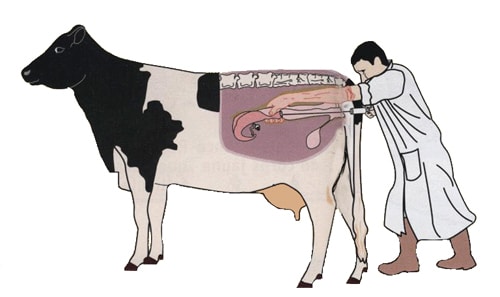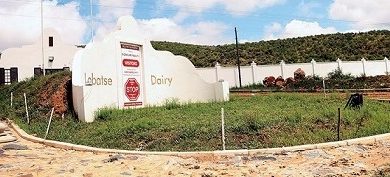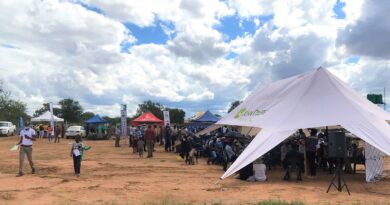Artificial Insemination in Livestock
Written by: Tshoganetso Timela
Image by : Agriculture Afrique
Artificial insemination is when fertilization of the livestock is achieved by injecting the semen of a bull into the vagina of the female counterpart using other techniques than the bull. It is performed by qualified personnel who have been trained. This is because the activity involves delicate parts which need to be held very well. Artificial insemination is mostly used in beef cattle and dairy cattle but it applies to other livestock goats, chickens. AI also brings the issue of crossbreeding to surface as the bull selected can be of a different breed and the farmer would want to improve his/her stock.
The success of artificial insemination is highly dependent on management skills and commitment of the farmer and the farm. The farm needs to have an intensive breeding system which will allow for AI activities. The farmer should pay attention to details of all the farm practices that takes place and even preparation before mating so that at least 90% conception rate is achieved. Skilled labor is needed to perform such activities and even the herd boys should be knowledgeable because they are the ones to detect heat on the cows and prepare for AI.
A) Importance of artificial insemination
#Allows for crossbreeding hence improving the characteristics and performance of the livestock.
#Cheap to use than using a bull because it is expensive to buy and maintain.
B) How artificial insemination is performed
For artificial insemination to be carried out the following should be done:
1. Semen selection:
Artificial insemination offers a wide range of semen to choose from. Every semen stored has details on the time and date it was collected, the bull history; vaccination details and location. Breed name and the characters of the bull on which breed it is mostly compatible with to have the best results. This solves the issue of genetic variation of the bull and the cow to be used. Selection of the bull will also include the preference by the farmer on what characteristics they are looking for. Climatic conditions also affect climatic conditions as to which the offspring will do better in the local conditions.
2. Tools used:
Liquid Nitrogen tank, Long gloves, Insemination rod, Paper towels, Straw cutter, Sheath, Semen straw, Warm water bath, Thermometer, Rubbing alcohol, Clock, Record books.
3. Heat detection in female livestock:
This is very critical so that you do not waste semen in cattle which will not conceive. When the cows are on heat they go through a process called standing estrus which is when the cow will show signs of mounting other cows, restlessness, roughed tail-head or mud on the ramp and showing a mucus discharge from the vulva. Heat period should be timed very well especially the period of standing heat. After 12hours of standing heat it is best to perform AI because the cow would have ovulated and it will be at its highest point of fertility. There are other techniques which can be adopted like the AM/PM rule where the cows on heat in the AM will be AI in the PM and those on standing heat in the PM will be AI in the AM.
4. Handling of the semen:
The semen is very sensitive to change in temperatures. The semen in storage is called straws. It is kept at very low temperatures of -195oC and stored in liquid nitrogen which keeps the temperature to stay at that state. The tank that is used has to be insulated to control temperature changes. It also needs to be kept clean dry and well ventilated. Movement of the semen should be avoided as this will temper with the quality of the semen.
5. Insemination of the semen:
For insemination to be done hygiene should be practiced; the outside tract of the cow should be washed to remove manure and contaminants to reproductive of the cow. The straws will be cut and fitted into the sheath, then it is fitted into the insemination rod. The gloved arm grasps the cervix and the insemination rod is inserted then inseminated to the vagina of the cow. The whole process should be done with less than 15 minutes.
C) When Artificial insemination should be done
AI is done during a period where the cow is in heat. This is an indication that the cow will ovulate and fertilization is highly likely to occur. It should also be done during a period where access to food and water is easier to find as nutrition at this stage is also very critical.



